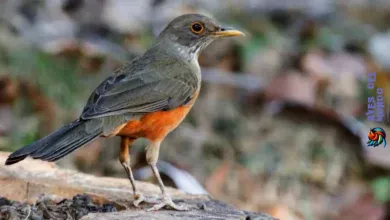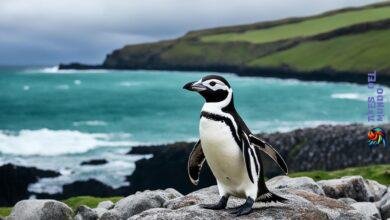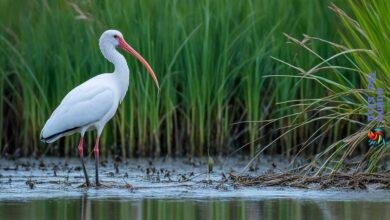Did you know that the kiwi bird, a flightless bird native to New Zealand, is not only a unique and extraordinary species but also an essential part of New Zealand’s wildlife ecosystem? With its distinct characteristics and conservation efforts, the kiwi bird holds significant importance in preserving endangered birds and maintaining the balance of nature.
In this article, we will delve into the intriguing world of kiwi bird facts, exploring their diverse species, unique features, habitat, conservation efforts, and more. Get ready to uncover the secrets of this remarkable bird from New Zealand, and gain a deeper understanding of its role in the natural world.
Five Species of Kiwi Birds
There are five species of kiwi birds, each with its own distinct characteristics and habitat. Let’s explore these unique kiwi species:
Brown Kiwi
- The brown kiwi is the most common kiwi species.
- It is found in the North Island of New Zealand.
Little Spotted Kiwi
- The little spotted kiwi is the smallest of all kiwi species.
- It is only found on offshore islands or in mainland sanctuaries.
Great Spotted Kiwi
- The great spotted kiwi is the largest kiwi species.
- It is exclusive to the southwest of the South Island.
Rowi
- The rowi is the rarest kiwi species.
- There are only around 450 birds in the wild.
Tokoeka
- The tokoeka kiwi species can be found on Stewart Island, Fiordland National Park, and the Haast ranges.
Each kiwi species has its own unique characteristics and plays an important role in New Zealand’s diverse wildlife ecosystem.
Kiwi Bird’s Unique Features
Kiwi birds possess several distinctive characteristics that differentiate them from other bird species. These kiwi characteristics exhibit mammal-like features, making them truly special. Unlike most birds that have fully developed wings, kiwis have tiny wings that are almost inconspicuous. Their feathers are loose and appear more like fur, adding to their unique appearance. Additionally, the nostrils of kiwi birds are located at the tip of their beaks, allowing them to have an exceptional sense of smell.
One remarkable feature of kiwi birds is their reproductive process. Unlike most birds that lay eggs that require incubation, kiwi chicks hatch fully feathered and independent. This is a notable characteristic as it sets them apart from other avian species. Kiwi chicks are born with nutritious yolk sacs that sustain them for their first 10 days of life, making them self-sufficient from the moment they hatch.
Despite these remarkable features, kiwi birds face numerous challenges in their survival. Their low survival rate is a concern, with only about 5% of kiwi chicks hatched in the wild managing to survive. This low survival rate contributes to their endangered status and highlights the importance of conservation efforts to protect these unique creatures.
Furthermore, kiwi birds are considered flagship species for conservation due to their cultural significance and ecological role. The kiwi’s status as a flagship species brings attention to the conservation efforts needed to preserve their habitats and ensure their survival.

| Characteristics | Description |
|---|---|
| Mammal-like features | Kiwis possess tiny wings, loose feathers that resemble fur, and nostrils on the tip of their beaks. |
| Fully feathered chicks | Kiwi chicks hatch fully feathered and independent, unlike most birds that need parental care and feeding. |
| Low survival rate | Only about 5% of kiwi chicks hatched in the wild manage to survive, contributing to their endangered status. |
| Flagship species | Kiwi birds are cultural ambassadors and an emblematic species for conservation efforts in New Zealand. |
Kiwi Conservation Efforts
Kiwi conservation efforts are crucial in addressing the declining populations of this iconic bird. Predators like stoats and cats pose a significant threat to kiwi chicks, resulting in a high mortality rate. To combat this, community-led groups and organizations in New Zealand are actively involved in kiwi conservation initiatives.
One of the key strategies in kiwi conservation is the establishment of protected areas and predator-free islands. These areas provide safe havens for kiwi birds to breed and raise their chicks without the risk of predation. Fenced predator-free zones are also implemented to create secure habitats for kiwis to thrive.
A notable example of successful kiwi conservation is the case of the little spotted kiwi population. With the efforts of conservationists and local communities, the population of little spotted kiwis has increased from a mere 5 individuals to over 1,200. This achievement highlights the positive impact of community action and conservation interventions in preserving kiwi populations.
In addition to protected areas, community-led trapping and monitoring programs play a crucial role in kiwi conservation. These programs aim to control predator populations and regularly monitor kiwi habitats to ensure the safety and well-being of the birds. Through community involvement and awareness campaigns, more people are becoming actively engaged in kiwi conservation efforts.
Community Action in Kiwi Conservation
Community action plays a vital role in kiwi conservation. Local communities, together with government agencies and conservation organizations, collaborate to protect and restore kiwi habitats. Through volunteer programs, fundraising events, and educational initiatives, communities are actively contributing to the long-term survival of kiwi birds.
Table: Conservation Success Stories
| Species | Population | Conservation Initiatives |
|---|---|---|
| Brown Kiwi | Increasing | Community-led trapping programs, protected areas |
| Rowi | Stable | Predator-free islands, captive breeding programs |
| Tokoeka | Recovering | Fenced predator-free zones, habitat restoration |
These conservation success stories demonstrate that with dedicated efforts and community involvement, it is possible to reverse the decline of kiwi populations. Through ongoing conservation initiatives, the goal is to ensure a sustainable future for these unique and cherished birds.

Kiwi Bird’s Adaptations
Kiwi birds have unique adaptations that enable them to thrive in their environment. These adaptations include their nocturnal behavior, sense of smell, flightlessness, and unique feathers.
- Nocturnal Behavior: Kiwi birds are primarily active at night, making them nocturnal creatures. This behavior allows them to avoid competition with other bird species and predators, and they have adapted their senses accordingly.
- Sense of Smell: Kiwis have a well-developed sense of smell that plays a crucial role in their foraging and hunting activities. Their nostrils, located at the tip of their beaks, allow them to detect invertebrates, seeds, fruit, and small animals even in the dark forest floor.
- Flightlessness: Unlike most birds, kiwis are flightless. They have vestigial wings that are small and stubby, rendering them unable to fly. However, their powerful legs and muscular build make them adept at running and maneuvering through their forest habitat.
- Unique Feathers: Kiwi feathers are unlike those of typical birds. They feel more like mammalian fur than traditional feathers. This unique feather structure helps insulate the kiwi from the cold forest floors and provides additional protection from potential predators.
Kiwi birds’ adaptations are a testament to their remarkable ability to survive and thrive in their unique environment.
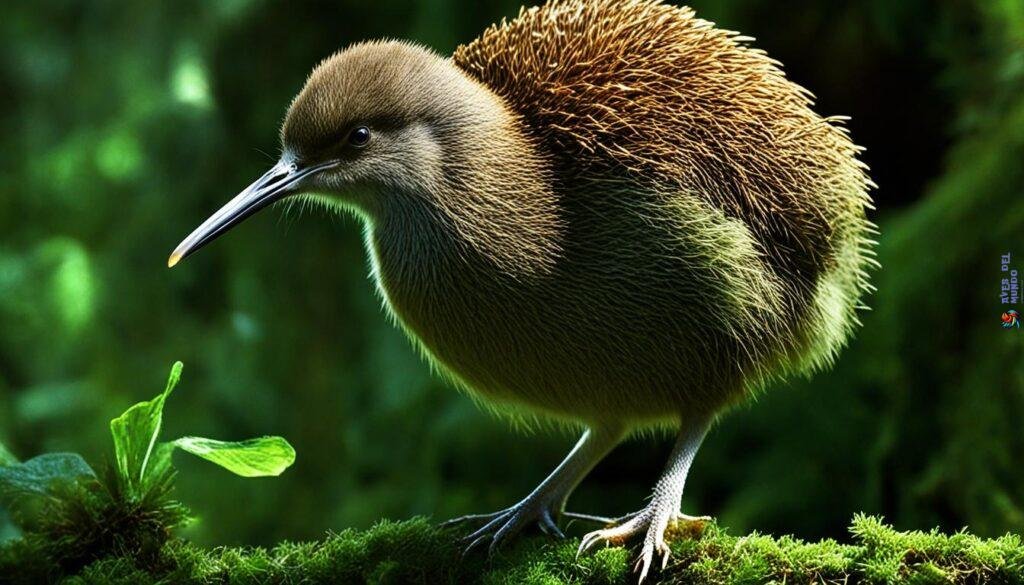
| Adaptation | Description |
|---|---|
| Nocturnal Behavior | Kiwi birds are active at night, allowing them to avoid competition with other bird species and predators. |
| Sense of Smell | Kiwis have a well-developed sense of smell that helps them locate prey, even in the dark forest floor. |
| Flightlessness | Kiwis are flightless birds. Instead of flying, they use their strong legs to navigate their forest habitat. |
| Unique Feathers | Kiwi feathers feel more like mammalian fur, providing insulation and protection against predators. |
Kiwi Bird’s Habits and Habitat
Kiwi birds are fascinating creatures with unique habits and a distinct habitat. Let’s explore some interesting facts about their burrow dwellings, territorial behavior, vocalizations, and their crucial role in forest ecosystems.
Burrow Dwellers
Kiwi birds are known for their impressive burrowing skills. With their strong toes and claws, they dig out intricate burrows in the forest floor. These burrows serve as their homes, providing shelter and protection from predators and harsh weather conditions.
Territorial Behavior
Once kiwi birds reach adulthood, they establish territories within their chosen habitat. They fiercely patrol their boundaries, defending their territory from other kiwis and potential threats. This territorial behavior helps ensure their access to food and breeding opportunities.
Vocalizations
Kiwi birds have a unique vocalization that is easily recognizable. Their characteristic call sounds like «kee-wee, kee-wee» and is often used as a means of communication with other kiwis. These vocalizations play a role in establishing and maintaining territorial boundaries.
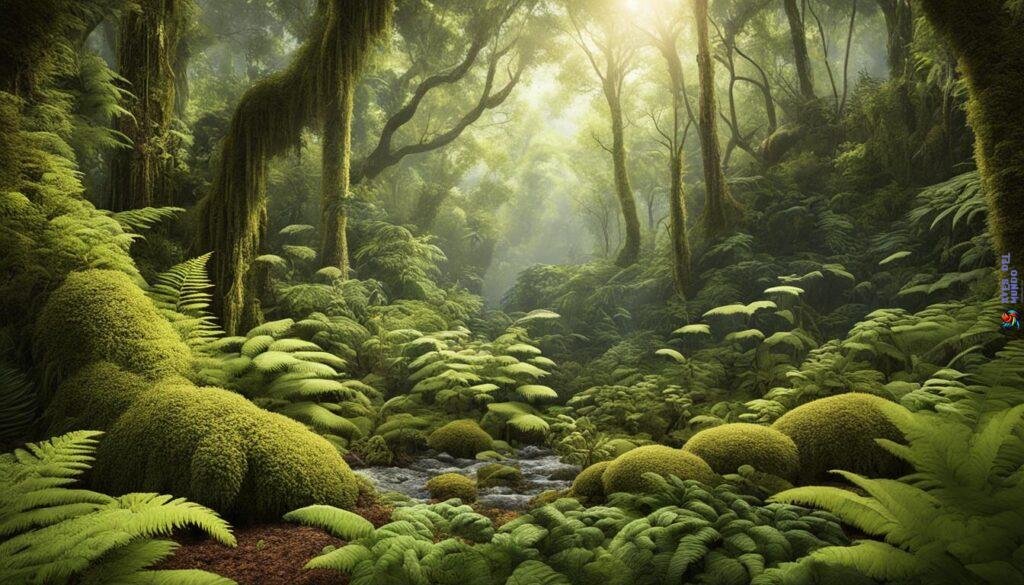
Forest Ecosystems
Kiwis play a vital role in New Zealand’s forest ecosystems. As they forage for food and move around their territories, they help disperse seeds, contributing to the regeneration and diversity of plant life. Additionally, kiwi birds control invertebrate populations, maintaining a balance within the forest ecosystem.
Kiwi birds’ burrow dwellings, territorial behavior, vocalizations, and their impact on forest ecosystems make them fascinating creatures worth studying and conserving.
Kiwi Bird’s Reproduction and Life Cycle
Kiwi birds have a unique reproductive process and life cycle that sets them apart from other bird species. Understanding these aspects is crucial for conservation efforts and the long-term survival of these iconic creatures. Let’s explore the key stages of the kiwi bird’s reproduction and life cycle.
Sexual Maturity and Breeding Season
Kiwi birds reach sexual maturity between 16 months to three years of age. Unlike most birds, female kiwis have two functional ovaries, enabling them to produce larger clutches of eggs. Breeding season for kiwis typically occurs between the months of July and February.
Egg Size and Incubation
Kiwi eggs have one of the largest egg-to-body weight ratios among birds. This means that the eggs are relatively large compared to the size of the adult bird. The table below provides a comparison of kiwi egg size and weight for each kiwi species:
| Kiwi Species | Egg Size | Egg Weight |
|---|---|---|
| Brown Kiwi | Length: 12-16 cm | Weight: 450-600 g |
| Little Spotted Kiwi | Length: 7-11 cm | Weight: 140-240 g |
| Great Spotted Kiwi | Length: 13-15 cm | Weight: 550-620 g |
| Rowi | Length: 15-17 cm | Weight: 630-740 g |
| Tokoeka | Length: 11-14 cm | Weight: 300-530 g |
Incubation of kiwi eggs is typically done by the male kiwi. The male constructs a nest and takes on the responsibility of keeping the eggs warm and safe until they hatch. This unique behavior highlights the role of male kiwis in nurturing and protecting their offspring.
Parental Care and Long Lifespan
Kiwi pairs usually mate for life, establishing a strong bond. Both parents actively participate in caring for the chicks. Once the eggs hatch, the parents provide continuous care, feeding the chicks and teaching them vital survival skills. This shared parental responsibility enhances the chances of survival for kiwi chicks.
Furthermore, kiwi birds have a long lifespan compared to many other bird species. In the wild, they can live up to 50 years, ensuring that they contribute to their habitats and ecosystems for an extended period.
Now that you have gained insight into the reproduction and life cycle of the kiwi bird, you can appreciate the intricate processes that contribute to their survival. Kiwis’ sexual maturity, breeding patterns, egg size, incubation, parental care, and long lifespan all play a vital role in preserving these remarkable creatures.
Threats to Kiwi Birds
Kiwi birds, with their unique characteristics and significance in New Zealand’s culture, face various threats that endanger their survival. These threats include predation, habitat loss, and human disturbances.
Predation
Kiwi chicks are particularly vulnerable to predation by stoats, ferrets, weasels, cats, and dogs. These predators contribute to a low survival rate among kiwi chicks, hindering their population growth and recovery efforts.
Habitat Loss
The loss of suitable habitat is another significant threat to kiwi bird populations. Deforestation, urbanization, and land development contribute to the destruction and fragmentation of their natural habitats, reducing their available resources and increasing their vulnerability.
Human Disturbances
Human activities, such as tourism, recreational activities, and pollution, can disrupt kiwi bird habitats and disturb their natural behavior. Noise pollution, habitat degradation, and invasive species introduced by humans further impact the survival and reproductive success of kiwi birds.
Despite these challenges, conservation efforts are underway to protect and restore kiwi habitats. Initiatives like establishing predator-free zones, implementing community-led projects, and raising awareness about the importance of kiwi conservation play vital roles in ensuring the survival of this endangered species.
| Threats | Impact on Kiwi Birds |
|---|---|
| Predation | Low survival rate for kiwi chicks |
| Habitat Loss | Reduction in suitable habitats and resources |
| Human Disturbances | Disruption of natural behavior and reproductive success |
The Significance of Kiwis Birds
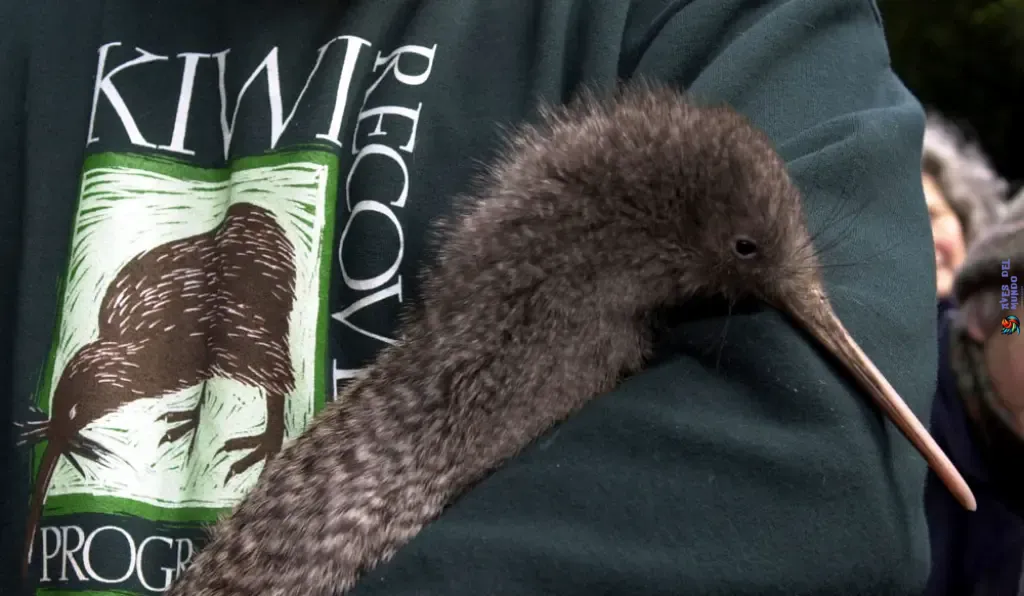
Kiwi birds hold cultural significance in New Zealand, making them a national symbol that represents the country’s unique identity. These fascinating creatures have captured the hearts of the nation and are deeply intertwined with its culture and heritage.
Beyond their cultural value, kiwi birds play a crucial role in raising conservation awareness. Their distinct characteristics and conservation efforts have shed light on the importance of protecting native wildlife and preserving delicate ecosystems. As ambassadors for conservation, kiwi birds inspire communities to take action and contribute to the preservation of their natural habitats.
The conservation awareness surrounding kiwi birds has led to the implementation of various initiatives in New Zealand. Efforts by individuals, organizations, and the government focus on creating and maintaining protected areas, implementing predator-free zones, and actively managing wild kiwi populations. These collaborative endeavors aim to ensure that kiwi birds continue to thrive while generating awareness about the need to safeguard the biodiversity of New Zealand.
